The second-largest island in the Maltese archipelago, Gozo, is well known for its extensive cultural history, local handicrafts and of course Gozo Glass.
Gozo glass, a traditional craft with centuries of history, is one of its most prized artistic creations. Both residents and visitors have been fascinated by this delicate and intricate glasswork’s vivid colours and superb craftsmanship.

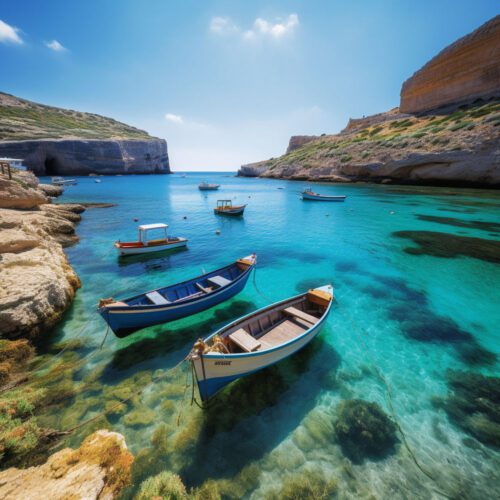
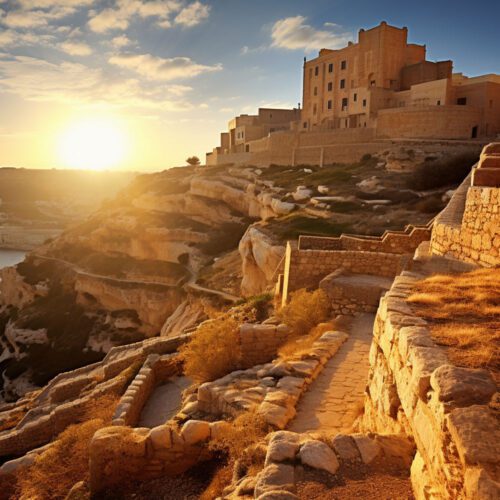
Where Did Gozo Glass Come From?
One of the oldest crafts in the area, this glass has roots that date back to the Phoenicians era. Around 700 BC, the maritime traders and explorers known as the Phoenicians brought glass-making technology to the Maltese islands. Glass-making studios were established on Gozo as a result of the strategic importance of the islands along Mediterranean trade routes, which allowed for the exchange of goods and cultural influences.
Ancient glass workers on the island of Gozo made mostly functional glassware, such as jars, vases, and containers, which were used for a variety of everyday tasks and the storage of valuable liquids and oils for commerce and daily living.
Byzantine Rule of Gozo
Under Byzantine rule, Gozo’s glass industry greatly developed as glassmakers improved their processes and added elaborate patterns and vivid colours. During this time, the use of gold leaf and enamel on glass became distinguishing characteristics of Gozo-style glass. Using these methods, artists were able to produce stunning decorative items that captured the splendour of Byzantine art.
Arabic Heritage
Gozo glass has been influenced ever since the Arab Conquests of the Maltese islands in the ninth century. Innovative glassmaking and glassblowing methods developed by Arab artisans changed the local industry. The ability to make more intricate and delicate shapes through glassblowing led to a rise in the manufacture of ornamental glassware.
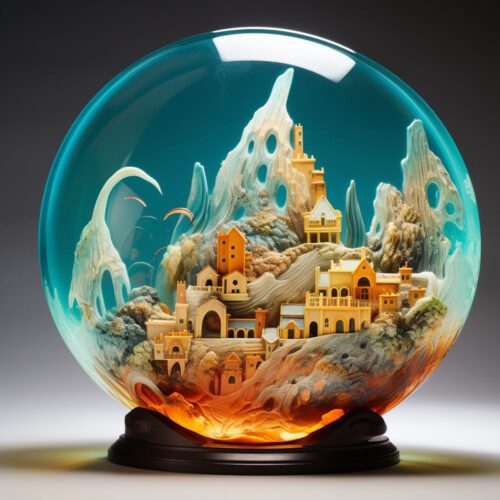
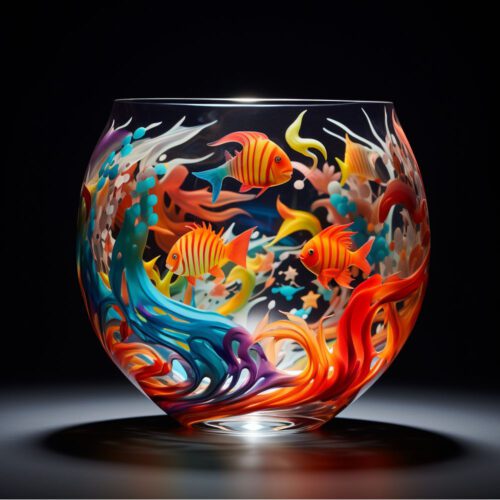
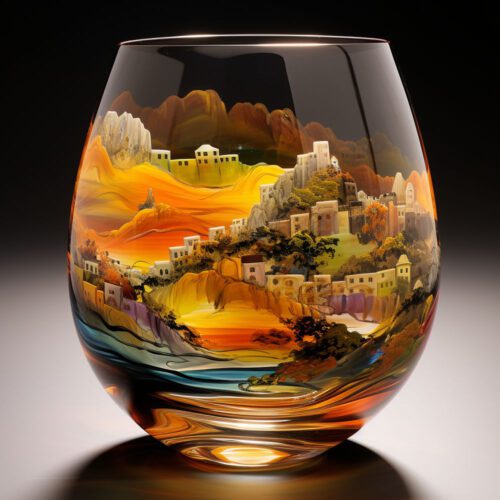
The Renaissance and the Order of St. John
The Knights of St. John, a military and religious order, seized control of Malta and Gozo in the sixteenth century. The Knights actively supported the advancement of Gozo and its glass artisans and were great supporters of the arts. The art form experienced a revival during this time, with expert artisans producing remarkable glass pieces embellished with elaborate patterns and motifs drawn from the crest and symbols of the Knights.
Gozo Glass in Modern Times
Gozo has succeeded despite difficulties including competition from mass-produced glassware and shifting consumer preferences. A renaissance of interest in handcrafted goods and traditional crafts in the late 19th century led to a rediscovery of Gozo glass.
On the island of Gozo, family-run glass workshops were founded in the 20th century with the intention of preserving and advancing the traditional technique. These workshops preserved the age-old methods of producing glass that have been passed down through the generations while incorporating innovative designs to suit contemporary tastes.
The Modern Art of Gozo
Gozo-style glass is still a fundamental component of the island’s cultural history and a representation of its unique creative identity today. Using centuries-old methods that are frequently passed down from parents to their children, skilled glassblowers continue to produce beautiful sculptures.
Gozo’s beautiful glass is renowned for its stunning hues, which are produced by adding various metallic oxides as it is melted. Copper oxide creates a mesmerizing turquoise colour, whereas cobalt oxide results in a dramatic deep blue colour. The molten glass is additionally covered in gold and silver leaf to give it a glittering metallic finish.
The art of glassblowing is a carefully orchestrated ballet of dexterity and accuracy. The skilled glassblower collects a small amount of molten glass on the end of a blowpipe and manipulates it into the desired shape by blowing air through the pipe and using various specialist tools. The glass is carefully annealed once it has been formed to ensure longevity.
Glassworkers in Gozo produce a broad variety of goods, such as ornamental vases, bowls, candlesticks, and detailed sculptures. These one-of-a-kind items frequently include detailed designs with natural island themes like seashells, marine life, and floral motifs.
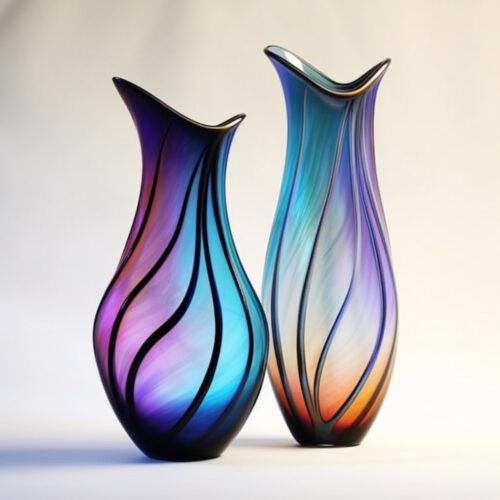
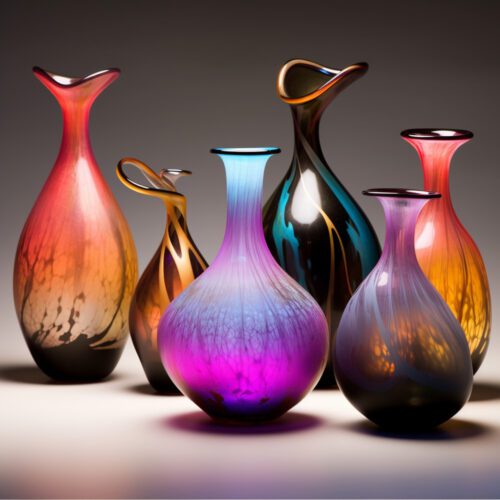

Preserving the Gozo Glass Legacy
To conserve the history of Gozo’s illustrious glass, numerous efforts have been launched, including museums, workshops, and art festivals. These initiatives aim to inform the public about the history of the art form, highlight the abilities of regional artisans, and offer a venue for the continued practice of this age-old craft.
Gozo glass is highly sought after by collectors and tourists alike as treasured keepsakes and works of art, boosting the regional economy and ensuring the survival of this age-old craft.
This glass is a symbol of the island’s illustrious past and diverse culture. Its progression from its prehistoric Phoenician roots to its present-day prominence as a revered art form is proof of the tenacity of tradition and the commitment of talented craftspeople. Gozo-style glass, with its stunning hues and exquisite patterns, never fails to enchant and serves as a constant reminder of the Maltese people’s talent and skill.
All images are copyright of Boha Glass. We were unable to locate any examples of historical Gozo Island Glass. If you have any pieces of ancient glass from Gozo, we would be delighted to show them here. Please do not send us any images of pieces made after 1990 as these probably come from the fine modern Gozo Glass company, set up by local entrepreneur Rupert Brooke and glass legend Michael Harris. Thank you.
